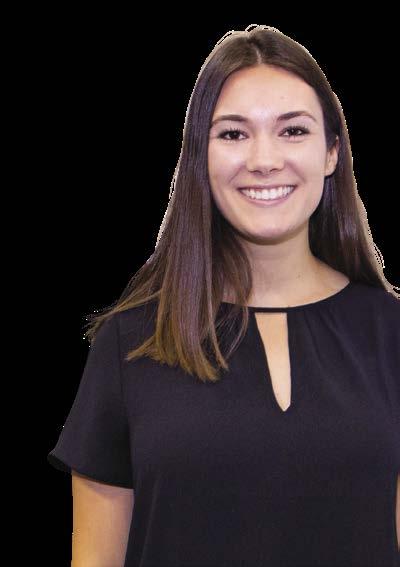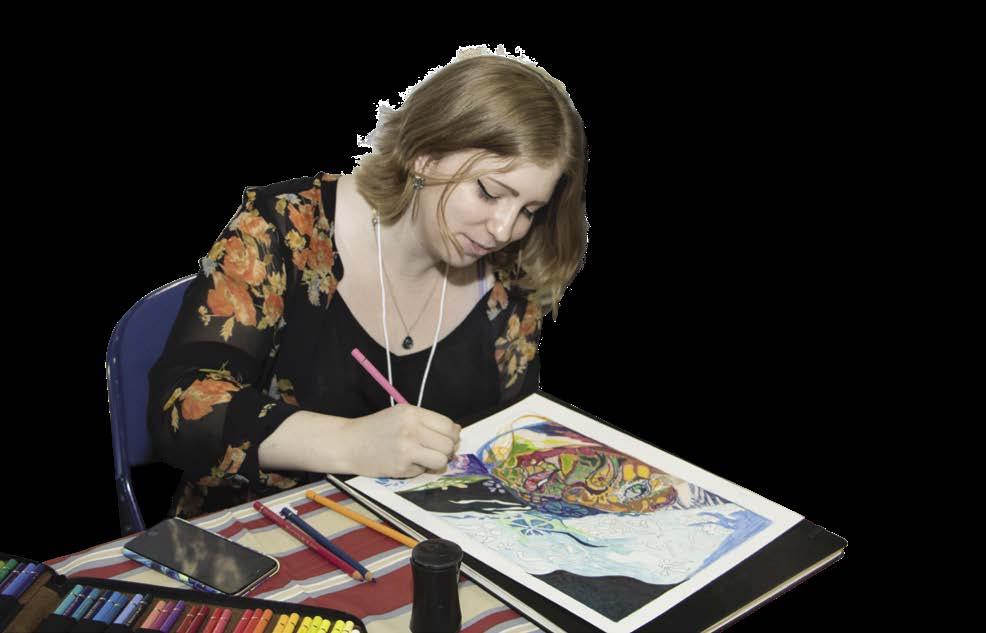
2 minute read
High-Impact Learning
Undergraduate research, scholarship, and creative activities
Nearly 50 percent of UC Davis undergraduates participate in facultymentored independent research and creative projects. Many cap their projects with presentations at the campuswide Undergraduate Research, Scholarship and Creative Activities Conference. More than 200 students from the College of Letters and Science showcased their projects. Many were supported by philanthropy.
Advertisement
“Research opportunities for students help prepare them for success in whatever they decide to do in the future,” said Annaliese Franz, faculty director of the Undergraduate Research Center and associate professor of chemistry.
Research on antidepressants and psychedelics

“Research was something I was always interested in when I came to UC Davis. I never imagined how far it would take me," says Alexandra Greb
Alexandra Greb (B.S., pharmaceutical chemistry, ’18) not only showcased her work, but also accomplished a rare feat for an undergraduate: she graduated in June with two publications to her name.
As a sophomore, Greb began work in the lab of David Olson, assistant professor of chemistry and of biochemistry and molecular medicine. She investigated the timing and mechanisms of a wide range of fast-acting antidepressants, including well-known psychedelic compounds such as ketamine, LSD and MDMA. Greb co-authored a report on the results that was published in June in the journal Cell Reports. Greb also wrote a paper with Birgit Puschner, a professor in the School of Veterinary Medicine, on cannabinoid treats for pets.
Creativity on display

“You can always find ways to make a living and do what you love," says Kristin Cox
Not long after arriving at UC Davis, Kristin Cox, who started off in pre-med, realized making art was more than a hobby and decided to major in art studio with a minor in art history.
Cox mounted an exhibit of her drawings and paintings. “Art is unique because it’s often invisible in the career world, yet very visible everywhere,” Cox said. “It’s in what people consume, and probably enjoy: advertising, video games, museums, costume design, and more.”
Cox hopes to attend graduate school and become an art therapist.
Accessible maps for the blind

“We want to use design to make a difference," says Matthew Raytis, center, with Zoe Nicole Martin
For research partners Zoe Nicole Martin and Matthew Raytis, guidance and support from UC Davis design professor Susan Verba was key in turning an idea into a reality.
Martin, a design major, and Raytis, a major in sustainable environmental design, created tactile maps with raised buildings and smooth pathways to help visually impaired students navigate campus in a safer and easier manner. “[Verba] led us to resources, shared her expertise in accessibility design, and always helped us figure out our next steps,” Martin said.
They printed the maps at the UC Davis Student Disability Center, which uses thermal technology to create the 3-D guide.
— Becky Oskin and Maddy Shiber (B.A., communication, ’18)










